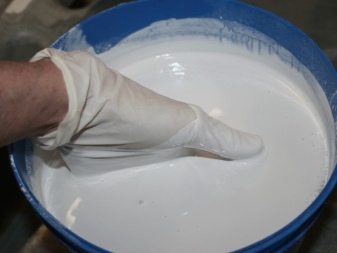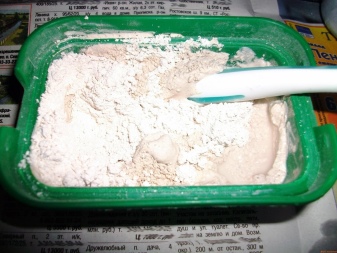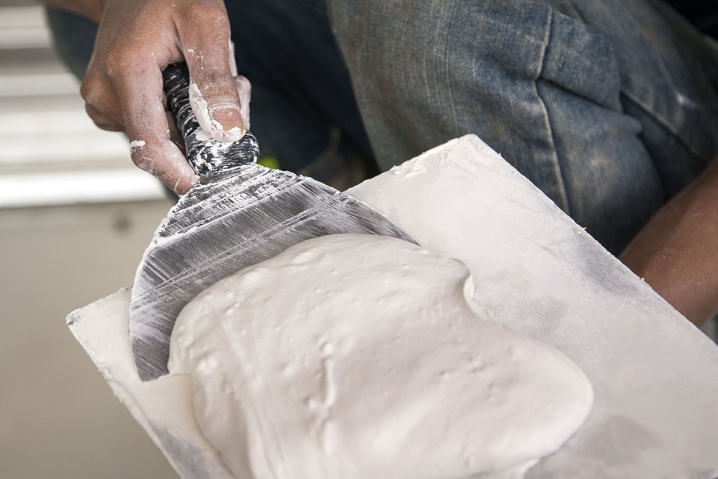What is the difference between gypsum and alabaster?

All construction and renovation work is characterized by the use of various materials. Gypsum and alabaster are among them. They are quite similar to each other, both externally and in scope, and they are very often confused. In the article we will talk about each of these materials, determine their technical characteristics, analyze how they differ, and which one is better to choose.


What freezes faster?
Before we start figuring out how these two substances differ and how they are similar, let's define what each of them is.
Gypsum belongs to dry building mixtures, the basis of which is natural gypsum stone. It is a material without any odor, it does not deform when exposed to high temperature.
One of its significant advantages are hypoallergenicity and environmental safety.


The scope of application of gypsum is diverse, it is used for:
-
the manufacture of gypsum plasterboards;
-
decorative surface finishing;
-
fixation in such branches of medicine as traumatology and dentistry;
-
modeling of sculptures and design elements of building facades.


Alabaster is also a dry building substance based on fine-grained gypsum. In the process of its production, very high temperatures are used, due to which the technical characteristics of the material differ from those of gypsum.
Alabaster can withstand exposure to very high temperatures, high humidity in the room. Refers to environmentally friendly and safe materials.
Drying time is one of the main characteristics of materials. It is this parameter that consumers pay attention to.


Freezing occurs:
-
gypsum - after 30 minutes after application to the surface, of course, if the technology for preparing the solution and conditions are maintained;
-
alabaster - after 5-10 minutes, that is, much faster, due to the technology of rock firing.
For the above reasons, alabaster is chosen by experienced builders who know how to work with the material and keep up with it. In work, it is quite difficult. To increase the time of its drying, it is necessary to use special additives and additives during the preparation of the solution. These substances are able to slow down chemical reactions in the mixture, and due to this, the material hardens after 20-30 minutes.


What is stronger?
Strength is another very important technical parameter of the material. The stronger it is, the more reliable and durable the product made of it.
Taking into account the experience and the many laboratory tests carried out, it can be said with precision that alabaster is much more durable.
Unlike alabaster, gypsum does not completely harden. According to the Mohs scale, the coefficient of strength and hardness of the material receives 2 points - this means that a product made of plaster can be damaged even with a fingernail. High humidity in the room can cause it to crumble.
But alabaster received 3 points, that is, it is stronger, characterized by a high level of adhesion and internal adhesion, which contributes to a strong connection of the material to the surface.

How else are they different?
Alabaster and gypsum as dry building mixtures have certain physical and technical characteristics. There is a slight difference between them, but there is still a difference. In addition to the above parameters (strength and drying time), there are other differences.
Environmental friendliness
Both the one and the other refers to natural materials that are extracted from natural raw materials. But before entering the construction market, they go through a number of technological treatments, as a result of which their composition and properties change.
Gypsum is characterized by high environmental and safety factors, therefore it is used both in medicine and in construction. Alabaster is less safe.

Elasticity
Gypsum is a soft material, it is easier to work with it, but it is difficult to call it elastic. Very often, especially in inept and inexperienced hands, the material crumbles.
Alabaster, on the other hand, is harder and more elastic, but dries faster. You can sculpt anything from it, but you need to work quickly so that it does not have time to harden.


Dryness
The main difference between materials is production technology. Each of them is subjected to heat treatment, only low temperatures act on gypsum, and high temperatures on alabaster. As a result, a fairly large amount of moisture remains in the first, and in the future, mold and other microorganisms can form on it. Alabaster, on the other hand, is almost completely dehydrated after processing, which is why mold and mildew do not appear on it.
In addition to the above differences, there are a few more.
-
Alabaster elements and structures are crack-resistant. On gypsum, cracks always appear, which contributes to rapid destruction.
-
Soundproofing... Alabaster is characterized by higher sound insulation properties.
-
Alabaster, thanks to its fast drying, is often used as an additive to other solutions, to speed up the drying time.
-
Mixing the solution for further use. Mixing gypsum mortar is much easier. This is due to the fact that it does not grasp for a long time.

As you can see, these materials have many differences. As for the similarity, it is possible to note the wide scope and incombustibility of each of the materials.
What is the best choice?
It is difficult to say which substance is better and which one is worth using. It all depends on what purpose you want to use the material for.
It's no secret that gypsum is used more often than alabaster. This is due to the fact that the material is easier to work with. There are several types of gypsum.
-
Building... It is used in the process of performing plastering works. Lime is added to the solution to increase the elasticity. It is ideal for interior finishing in dry rooms. Plaster of Paris can be used instead of plaster.

- High strength... Fireproof partitions, earthenware and porcelain sanitary ware are made from it today. And also the material has found application in medicine.

- Polymeric... This type of gypsum is often used in traumatology.

- Sculptural... Indispensable for casting various crafts - figurines, souvenirs. In the aviation and automotive industries, it is used for the production of parts and structural elements.

- Acrylic... It is widely used in the process of interior decoration. It is used for the manufacture of stucco, decorative stone.

Alabaster can be used exclusively in the construction industry. This is a fireproof material, therefore it is suitable for finishing premises with a high level of fire safety requirements. The mixture can be used in the process of performing electrical work, for example, for mounting socket boxes.
Besides the scope of application, when choosing, you need to take into account your own experience in working with these building mixtures.









The comment was sent successfully.